-
 Nicky Cherian | 11 Sep, 2025 | 15 Minutes
Nicky Cherian | 11 Sep, 2025 | 15 Minutes
The new iPhone 17 Air just dropped, and it’s Awe Dropping, just like their event. Yes, it
includes the lineup featuring usual suspects but with better specs - the iPhone 17, 17
Pro and 17 Pro however the hype this year is surrounding the iPhone 17 Air. Let's be
honest, it's about time Apple released a featherweight phone to complete its Apple Air
Series trinity comprising the MacBook Air and iPad Air.
Retrospectively speaking, 2025 has been a rollercoaster ride of various smartphone giants
trying to shave millimeters like there is no tomorrow and it doesn't seem to be stopping
anytime soon. Last spring we were introduced to the Samsung Galaxy S25 Edge that was
merely 5.8mm. The more recent Galaxy Z Fold 7 is impressively 4.2 mm when unfolded, but
Huawei's tri-folding marvel of a smartphone, the Mate XT Ultimate , pulls it off at a
ultra slim 3.6 mm when unfolded. Smaller brands like Tecno also want a piece of the
action, and they did it teasing a super-slim 5.93mm smartphone at the Mobile World
Conference 2025 event in Barcelona.
So what does Apple's new iPhone 17 Air have to offer? The company has promised that it
isn't just an upgrade; it's a completely new way of thinking about what a phone can be.
So, let’s dive in and see if this impossibly thin device is the future of mobile tech or
just a pretty face.
1. Display
Now Apple has never skimped out on its display tech and the iPhone 17 Air comes
equipped with the best. It comes with a substantially large 6.5-inch, 2736 x
1260px
resolution, OLED display, display that is sure to catch your eye. It features an
anti-reflective coating like the one on the Samsung S25 Ultra, so you can
actually
see what you're looking at when you are at the beach without holding your hand
over
the screen like a sun visor. Besides it has a peak brightness of 3000 nits
making
visibility a no-brainer. Plus, your photos and videos are going to look
absolutely
stunning.
Its anti-scratch protective armour is a their all new Ceramic Shield 2 which
Apple
claims is 3 times more scratch resistant than their previous Ceramic Shield, so
your
Britney Spears "Oops I did it again" phone drop moments might just result in a
thud
and a deep breath instead of a trip to the Apple Store for a screen replacement.
Now, for the slightly more technical part. This is a 120Hz LTPO (Low Temperature
Polycrystalline Oxide) display. What does that mouthful mean? Apple's
proprietary
ProMotion technology allows the system to dial down the refresh rate to 1Hz and
save
battery when you're just reading a piece of content that is static such as an
email.
But the moment you start scrolling or playing a game, it zips up to a
super-smooth
120Hz seamlessly. The result? Everything feels buttery, and your battery doesn't
die
before lunch.
2. Body
Here's the showstopper: the iPhone 17 Air is a ridiculously thin 5.64mm at its
slimmest
point. To put that in perspective, the 16 Pro is a chunky 8.25mm—that's 33%
thicker!
Holding the Air is like holding a wafer-thin mint, but, you know, a phone, and if
you
have mitts the size of a bear's paw well good luck.
However this incredible feat of engineering was achieved by making some
compromises.
The
most notable? A single camera and a single speaker earpiece. This means the
sound
might
be a little "tinny" compared to the dual bottom speakers on the Pro models.
The chassis is made out of 80% Recycled Grade 5 Spacecraft Titanium as mentioned
by
Apple
in their keynote. This allows the phone to be extremely light bend resistant and
durable, making it a pretty good everyday phone. Apart from its Titanium + Glass
build
it also comes certified with an IP68 Water Resistance rating. Because life
happens,
and
you need a phone that can handle everything from a clumsy pool accident to a
little
underwater photography. For those who need a little extra reassurance, you can
slap
on a
GRABIT G-CASE Anti Yellowing Clear case and call it a day. As far as
colors
are
concerned they come in four stunning colours in a polished Titanium finish -
Space
Black, Cloud White, Sky Blue and Light Gold.
Under the hood, you’ve got an absolute beast just waiting to be poked. So how much
performance can you pack into that wafer thin body? Apple has set the bar on that as
well by dropping their most powerful A19Pro SoC chip into the equation. It has a 6 core
CPU that is split into 2 segments. 2 high performance cores that can do the demandingly
heavy processing and 4 efficiency cores that handle all your day-to-day, less power
consuming tasks. That's not all, the dedicated 5 Core GPU on the other hand is more than
what you need to handle all of your graphic centric workloads or extended gaming
sessions.
The 17 Air is like a size zero Supermodel that is powerlifter behind closed doors,
only difference being that this tall glass of water doesn't need to ditch the heels
or lose the poise while doing the heavy lifting
The 16 core neural engine accelerates machine learning and AI tasks by performing
them
quickly, with lower power consumption and efficiency instead of using the CPU or
GPU
alone which would take up a lot of power. Thanks to the 35 Trillion operations
per
second plus bandwidth it enables fast on-device processing for features that
range from
handling Cinematic Mode's focus shifts, stabilizing video in Action mode,
powering Live
Text and Visual Lookup, isolating voices on calls, to graphics based tasks like
enabling
ray tracing, and generating frames for smoother gameplay. It's also key for
battery
efficiency and accessibility features. Apart from all this it helps with Face
ID, Siri
Voice Recognition, Computational Photography, and newer Apple intelligence
features such
as Live Captions and image creation.
iOS 26 as apple calls it now in order to unify naming conventions among the
platform, has
a host of new features and improved interfaces. Among them the new Liquid Glass
UI
stands out considering it has a glassy, translucent look, and icons "float" with
specular highlights. It's like the icons are trapped under a layer of water, and
as you
swipe across them, they catch the light in real time thanks to the neural
engine. It’s a
simple yet ingenious little touch that makes the whole experience feel more
premium and
futuristic.
4. The Camera
Even with a single camera, the iPhone 17 Air is still a contender. It has a
massive
48MP
“Fusion” cam on a "pillow" camera bump.
The "Fusion" part is key—it's a software-driven technology. This standalone
shooter
isn’t
just about pretty design—it also delivers 2× optical-quality zoom, providing
sharper
close-ups without the need for multiple lenses.
Though it skips the ultra-wide and macro lenses found on its Pro counterparts,
the
Air
retains powerful imaging muscle. The Fusion sensor combines high resolution with
digital
cropping to ensure detail-rich shots, even from a single lens. Its architecture
appears
to be optimized for the thinnest hardware possible. On balance, the iPhone 17
Air's
rear
camera delivers sharp, high-resolution photos in a stunningly compact
package—perfect
for those who favor elegance and everyday functionality.
Just keep in mind: the iPhone 17 Air is basically streamlined by design, not
downsized in spirit making it an even stronger competitor.
But the real star of the show might be the 18MP front-facing camera with Apple's
proprietary Center Stage technology; a considerable leap from the old 12MP. Now your
front camera selfies give you more pixels, more flexible ways to frame your short
and
incredible stabilization.
However, this means your selfies will be sharper, your video calls will be clearer,
and
Face ID will work better in challenging lighting conditions thanks to the larger
square
shaped image sensor.
Traditionally Front camera sensors come in a 4:3 ratio that limits framing based on
the
orientation of the phone, but the iPhone 17 series all new larger square shaped
sensor
is a game changer that allows you to take pictures in any orientation in up to 4
different compositions while not compromising image details and quality. This means
you
don't have to rotate your phone to take a landscape selfie anymore. With the power
of AI
it also automatically adjusts the camera's orientation and field of view based on
the
number of people who join your selfie to accommodate everyone in one frame.
Centerstage also plays a major role in improving the new video feature of Apple
called
Dual capture. Dual Capture’s concept is an old technology that first appeared on the
LG
Wing back in 2020 and 21. In this you can record video on both the front and the
rear
camera while your video will be shown on your display in a window in window
interface.
Center Stage keeps your front facing video stabilized in real-time while shooting in
dual capture mode all thanks to the Neural Engine of the A19 pro chip, meaning you
can
focus on the action that you are recording on your real camera while centre stage
keeps
you focused on the front camera.
5. Speakers
In its pursuit of elegance and minimalism, Apple’s new iPhone 17 Air opts for a
single
mono speaker—the first mono-speaker iPhone since 2015. The bottom speaker has been
removed, preserving the ultra-thin 5.6mm titanium design but sacrificing stereo
sound in
the process. This design choice aligns with the device’s broader strategy—prioritize
sleek form and lightweight build above all. While audio fidelity may take a slight
hit
compared to newer stereo systems, the Air's high-efficiency internal speaker still
delivers clear and functional sound. For users expecting immersive media or
multi-channel audio, this trade-off might be notable. However, those focused on
portability and aesthetics may find the compromise acceptable in return for the
iPhone
17 Air’s stunning design. But what are accessories for right? If you are still
worried
about audio on the new iPhone 17 Air the GRABIT G-OVO mini portable magnetic speaker
is
going to be your accessory of choice, so you can still blast your tunes with some
bass
while still being small enough to hold in your palm and also double as a horizontal
phone stand.
6. Connectivity
Apple is taking a bold step and using its own custom-built Modem for cellular, Wi-Fi,
and
Bluetooth. This is Apple's way of saying "we're doing it ourselves now, thanks," and
it
means they can fine-tune the wireless performance to a level that other
manufacturers
can only dream of. The first, the N1 chip, is Apple’s all-new internal wireless
networking solution replacing Broadcom components. It brings Wi-Fi 7, Bluetooth 6,
and
the smart home protocol Thread under one umbrella, significantly boosting
performance
and reliability for features such as AirDrop, Personal Hotspot, and smart home
connectivity.
Complementing the N1 is the C1X 5G modem, the successor to Apple’s initial C1 modem
from
the iPhone 16e. The C1X offers twice the speed of its predecessor, while delivering
impressive 30% greater power efficiency—a critical enhancement for devices like the
iPhone Air where battery life and thinness are paramount. However, much like its
predecessor, it omits support for mmWave 5G, prioritizing efficiency over
ultra-high-frequency coverage.
These additions reinforce Apple’s commitment to vertically integrated hardware,
expanding
beyond its renowned A-series processors to create a more seamless and
energy-efficient
ecosystem—beginning with critical connectivity components. It’s also ESim only in
the
US, so if you're a jet-setter, you can finally ditch those tiny little pieces of
plastic.
7. Battery
And the battery? Well that was surprisingly one of the things that wasn't mentioned
on
thor Keynote or on the website however they did mention it to have All-Day Battery
that
would probably be extended or maintained via their Adaptive Power Mode feature in
the
new iOS26. This feature is supposed to study your usage patterns and then predict
your
usage during various times in the day adjusting power accordingly in real time based
on
your usage. However its safe to say with extended usage one cannot always expect the
battery to last an entire day hence a MagSafe Magnetic power bank like the GRABIT
GMAG-100 in Desert Gold would be something that would be extremely helpful in the
unlikely event your phone died on you.
8. Conclusion
The iPhone 17 Air is a study in purposeful compromise—it sheds the excess to achieve
a
breathtakingly thin and light design, but it doesn't skimp on the core technologies
that
make a phone a joy to use. It’s for the person who values style and a seamless
experience over all-out brute force. And that, my friends, is a new kind of Pro.

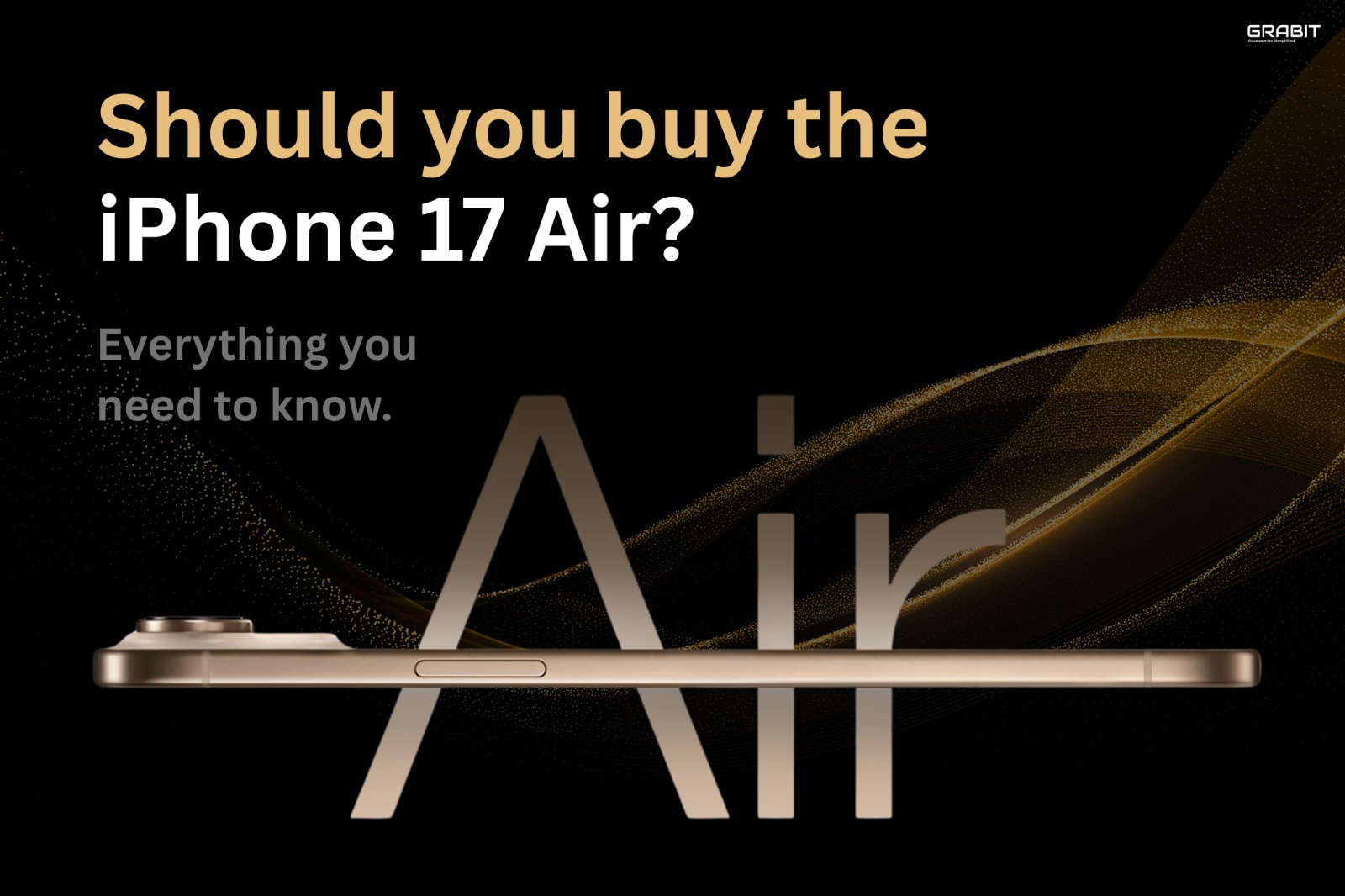
 Nicky Cherian | 11 Sep, 2025 | 15 Minutes
Nicky Cherian | 11 Sep, 2025 | 15 Minutes
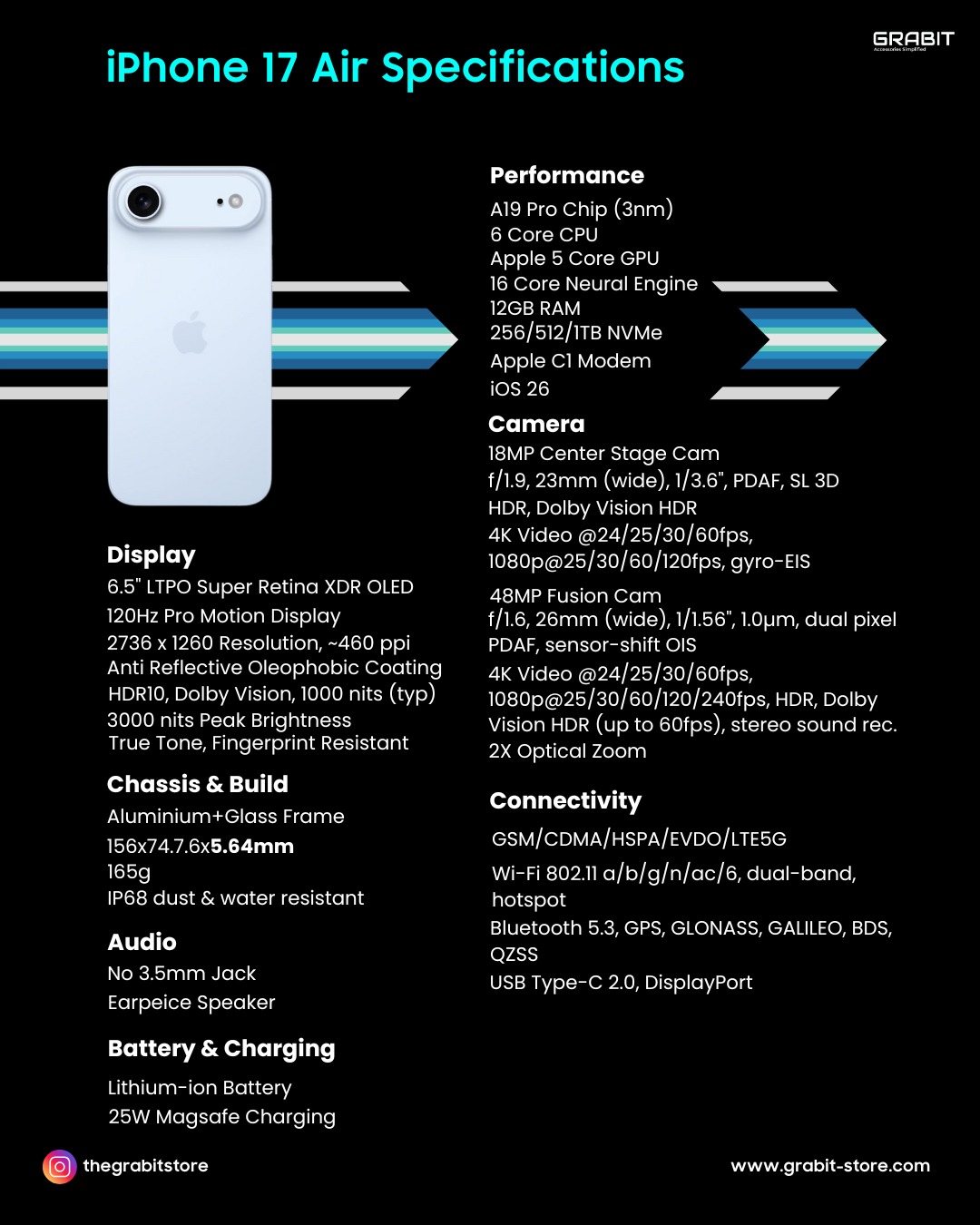
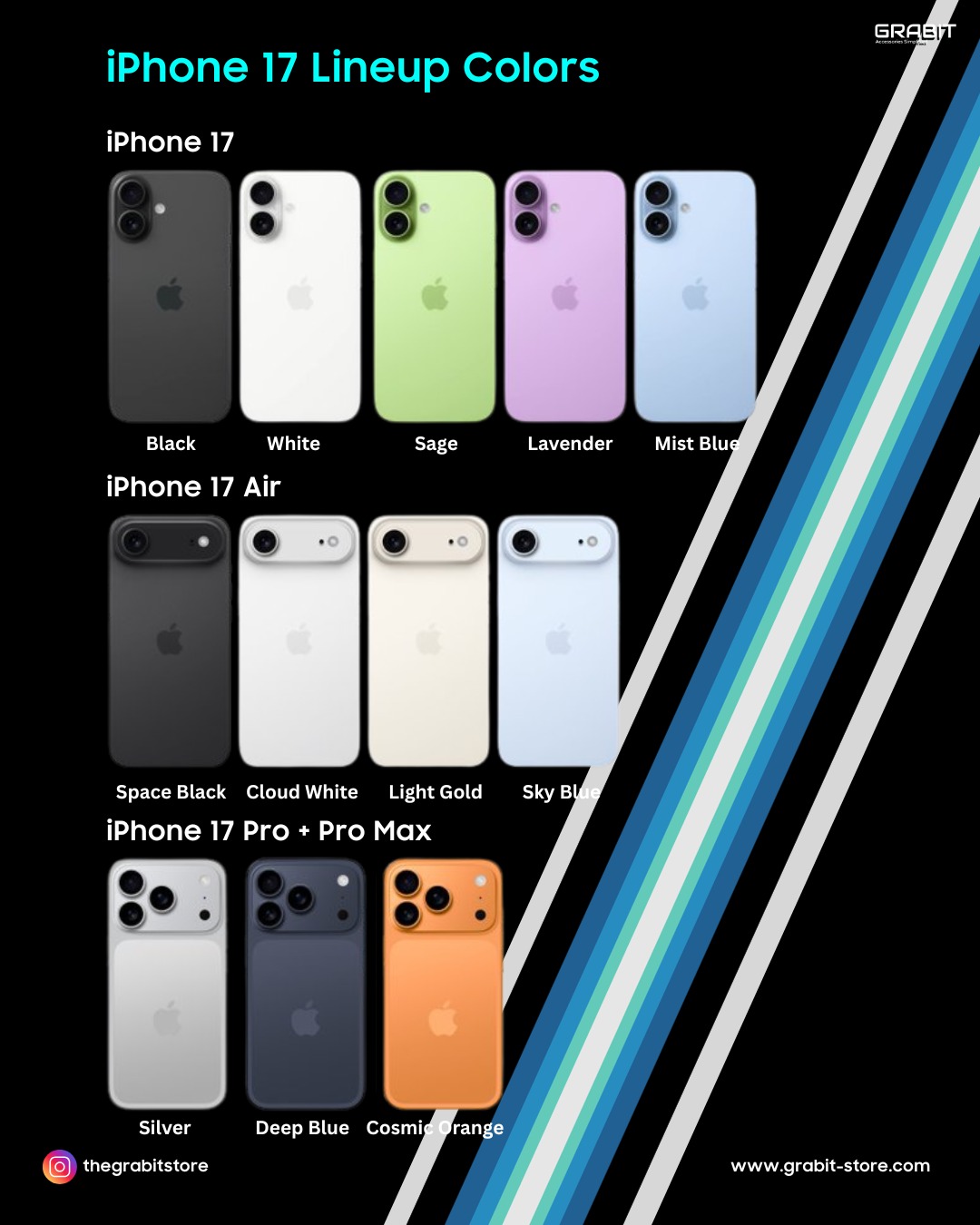

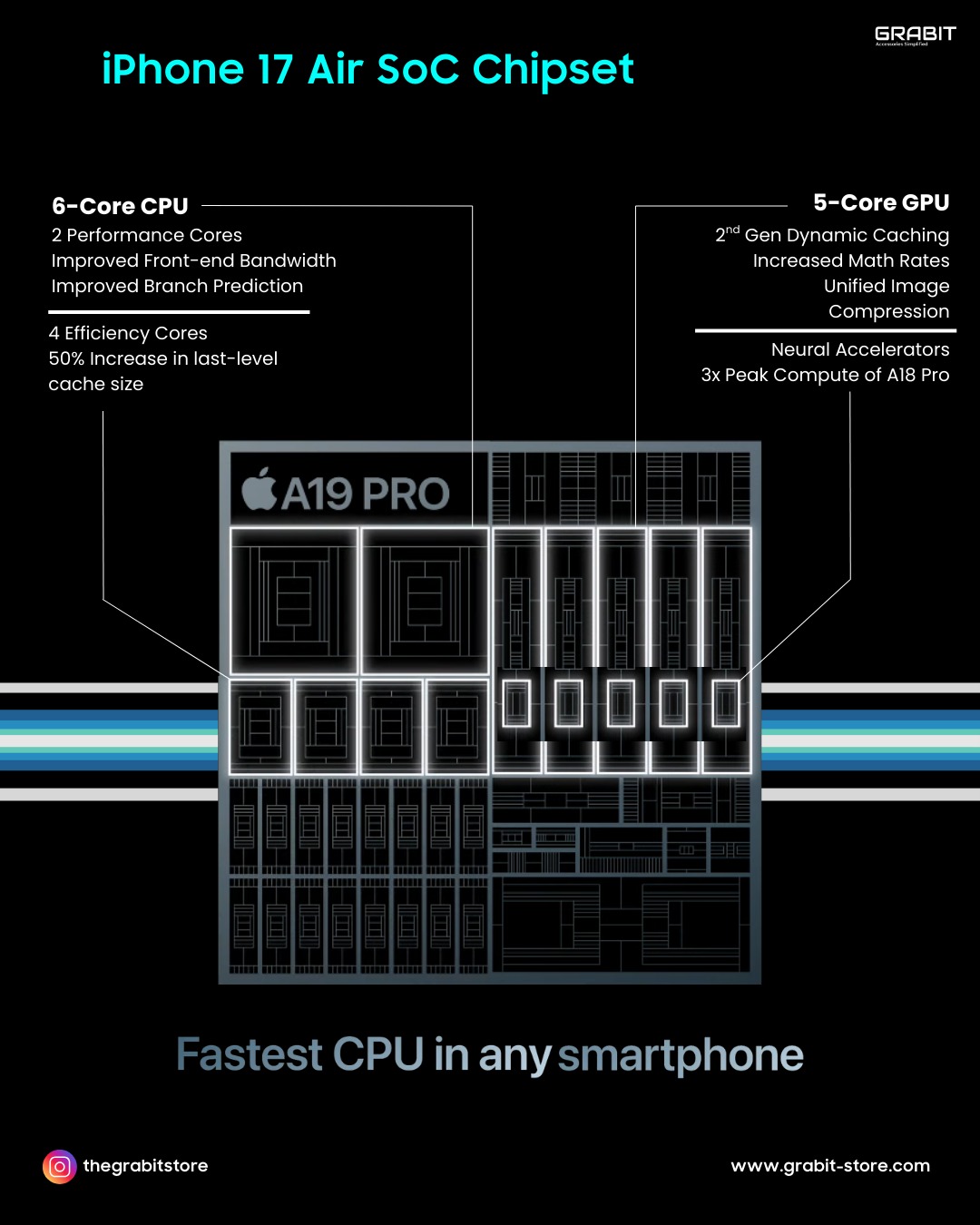
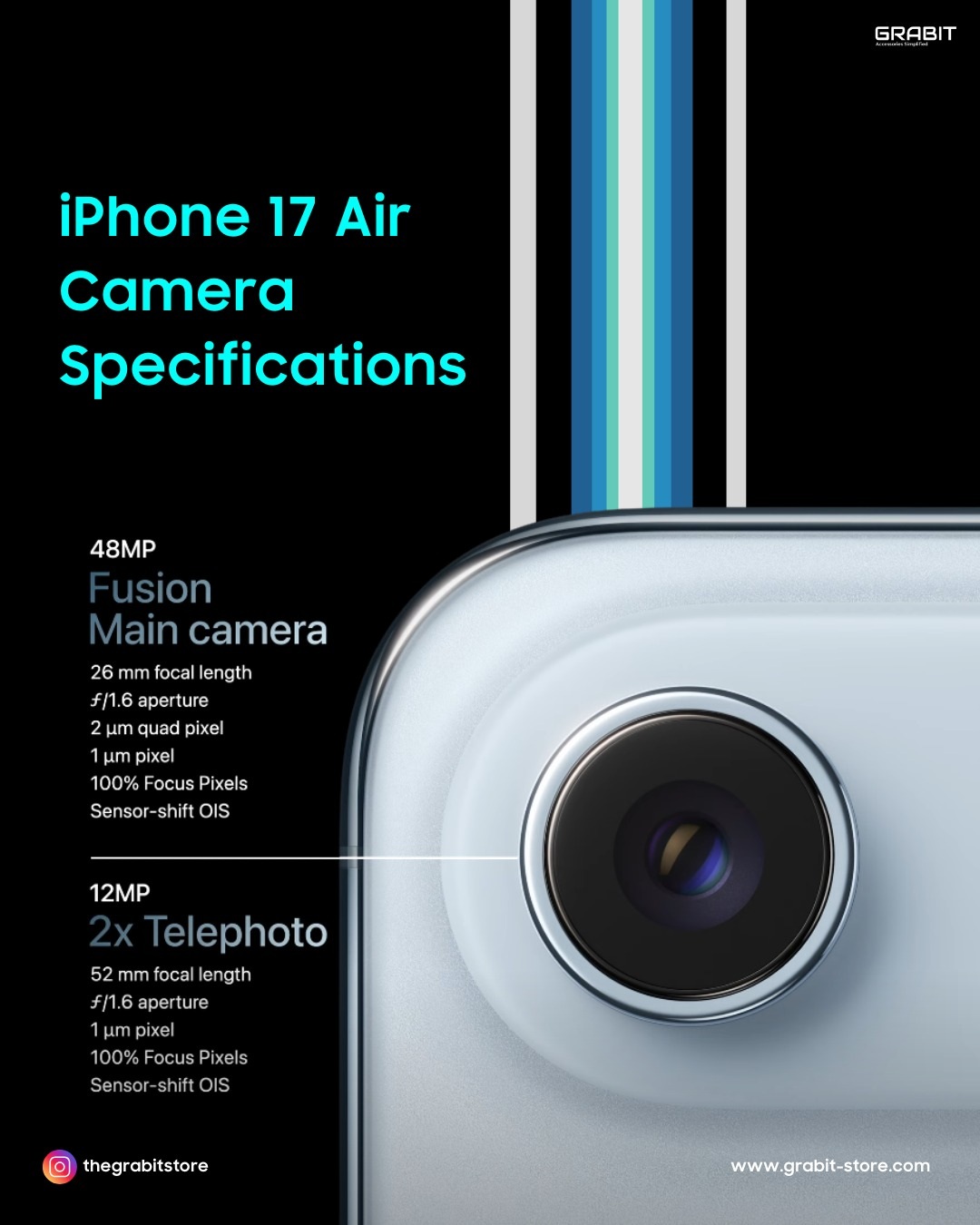
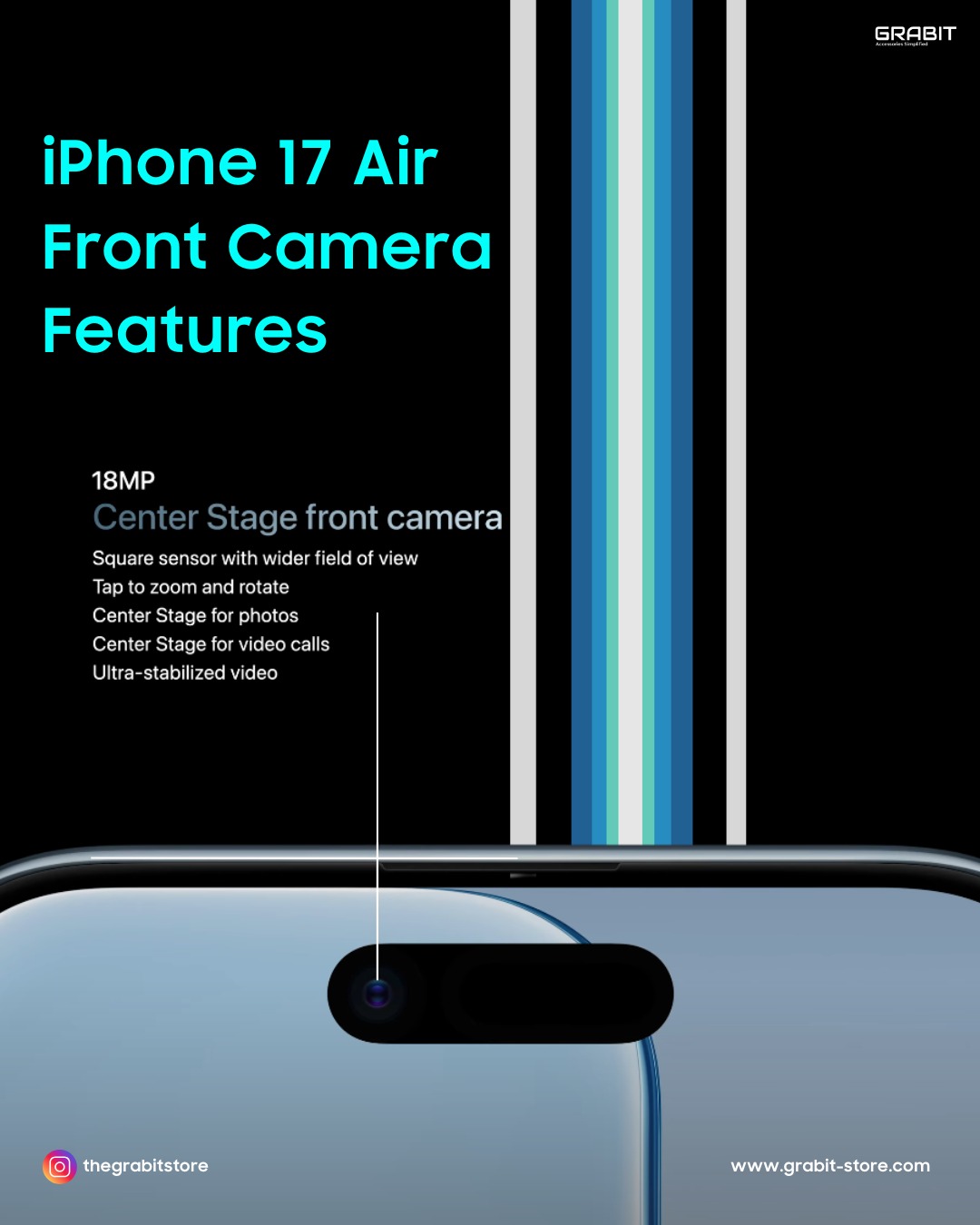
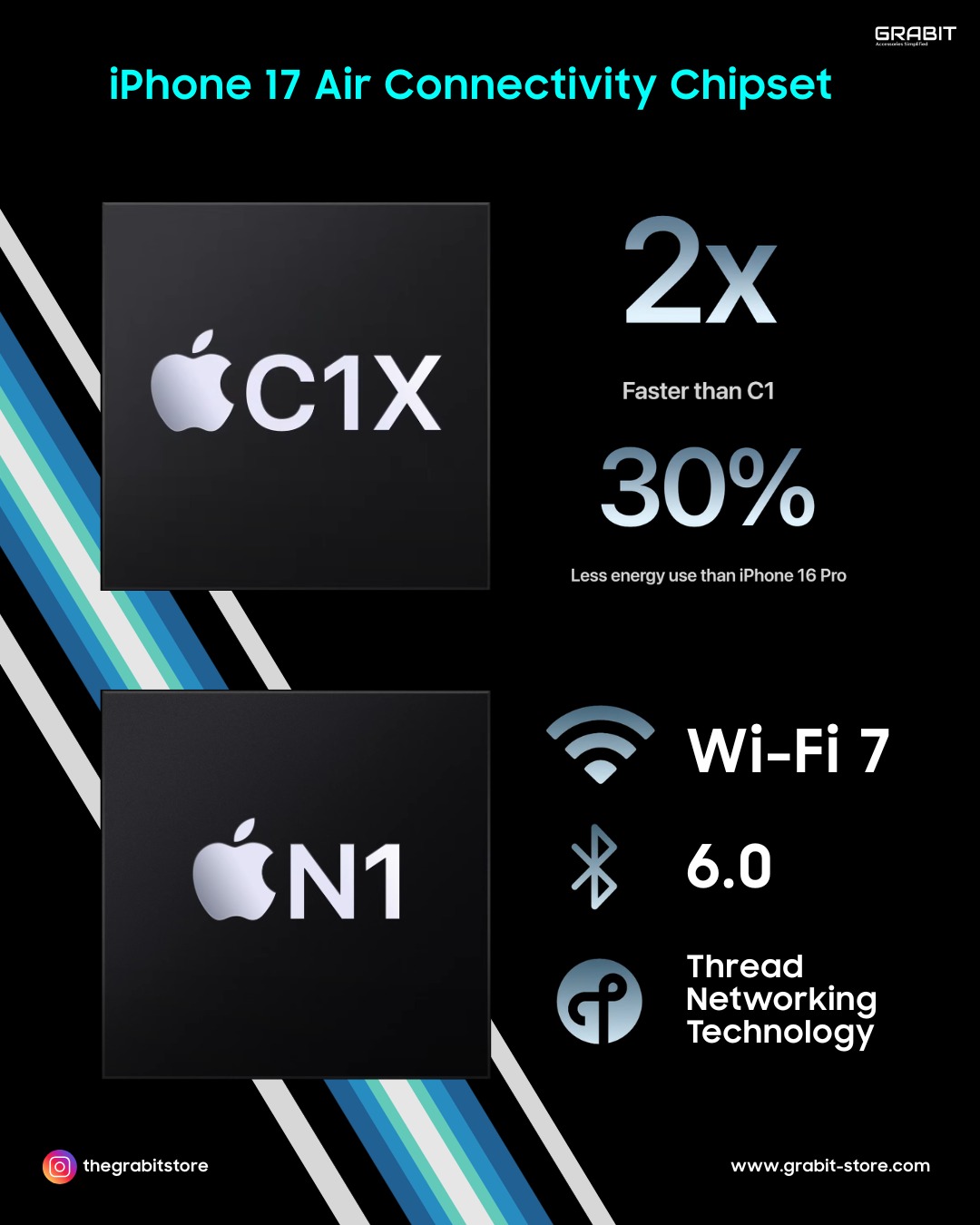


.png)
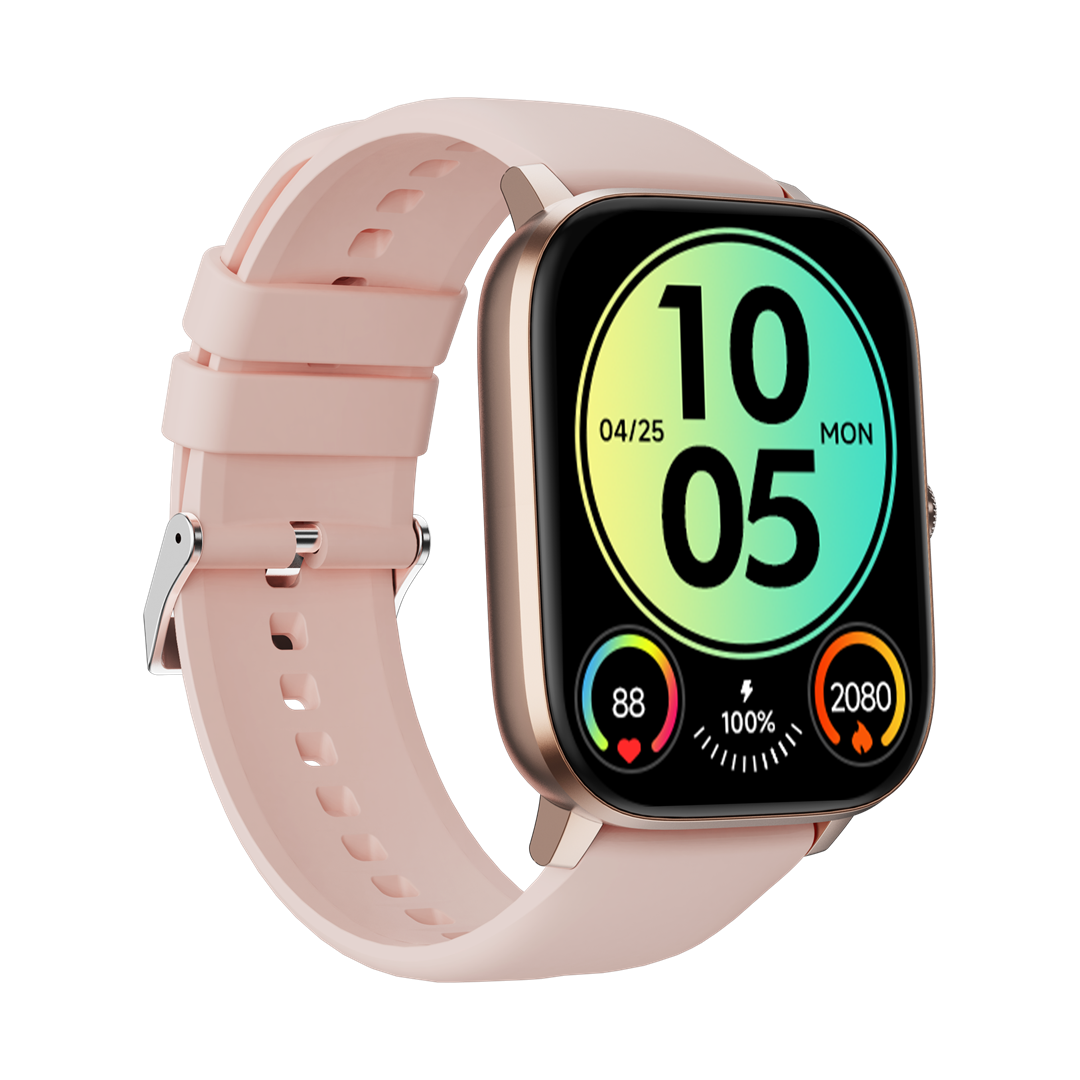
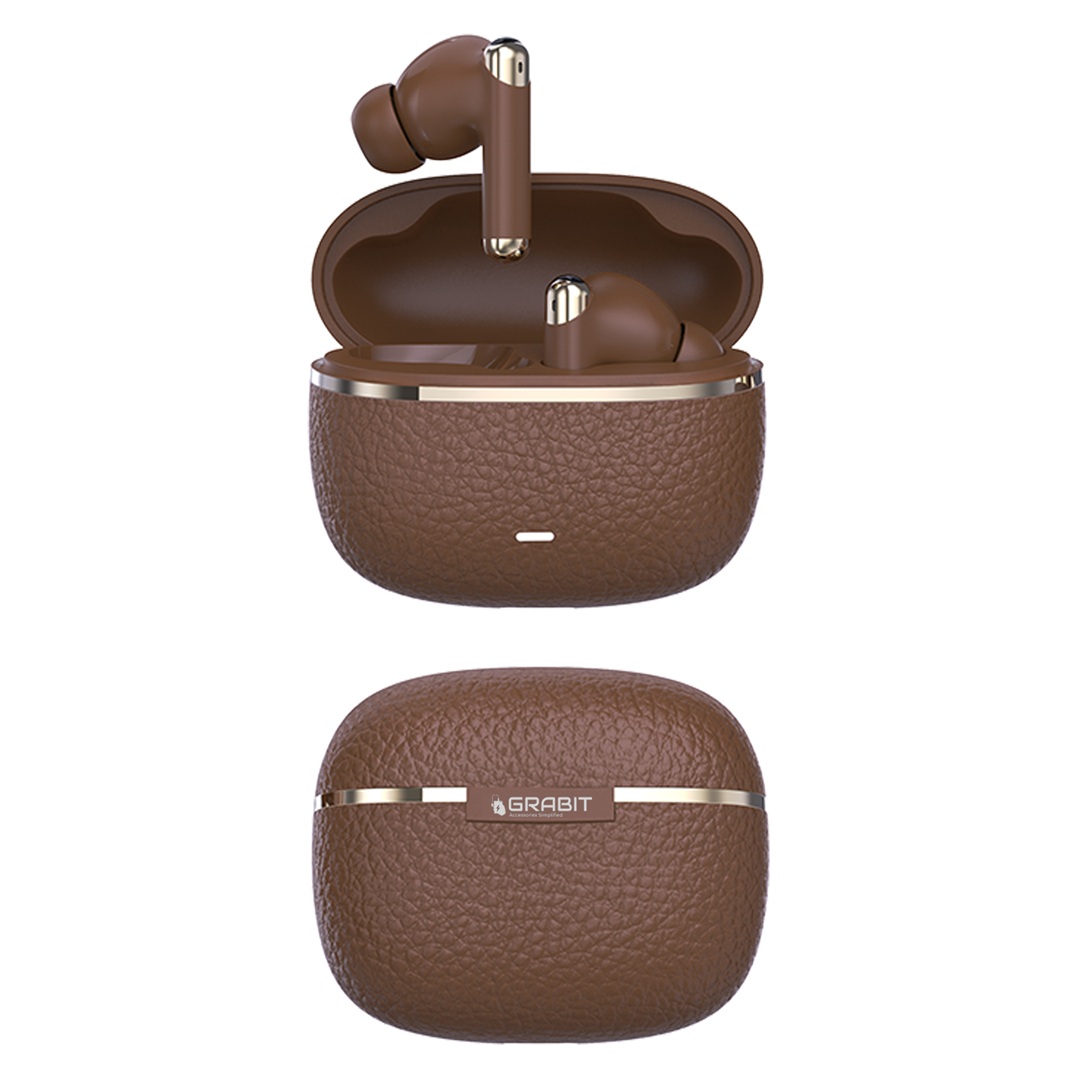
.jpg)
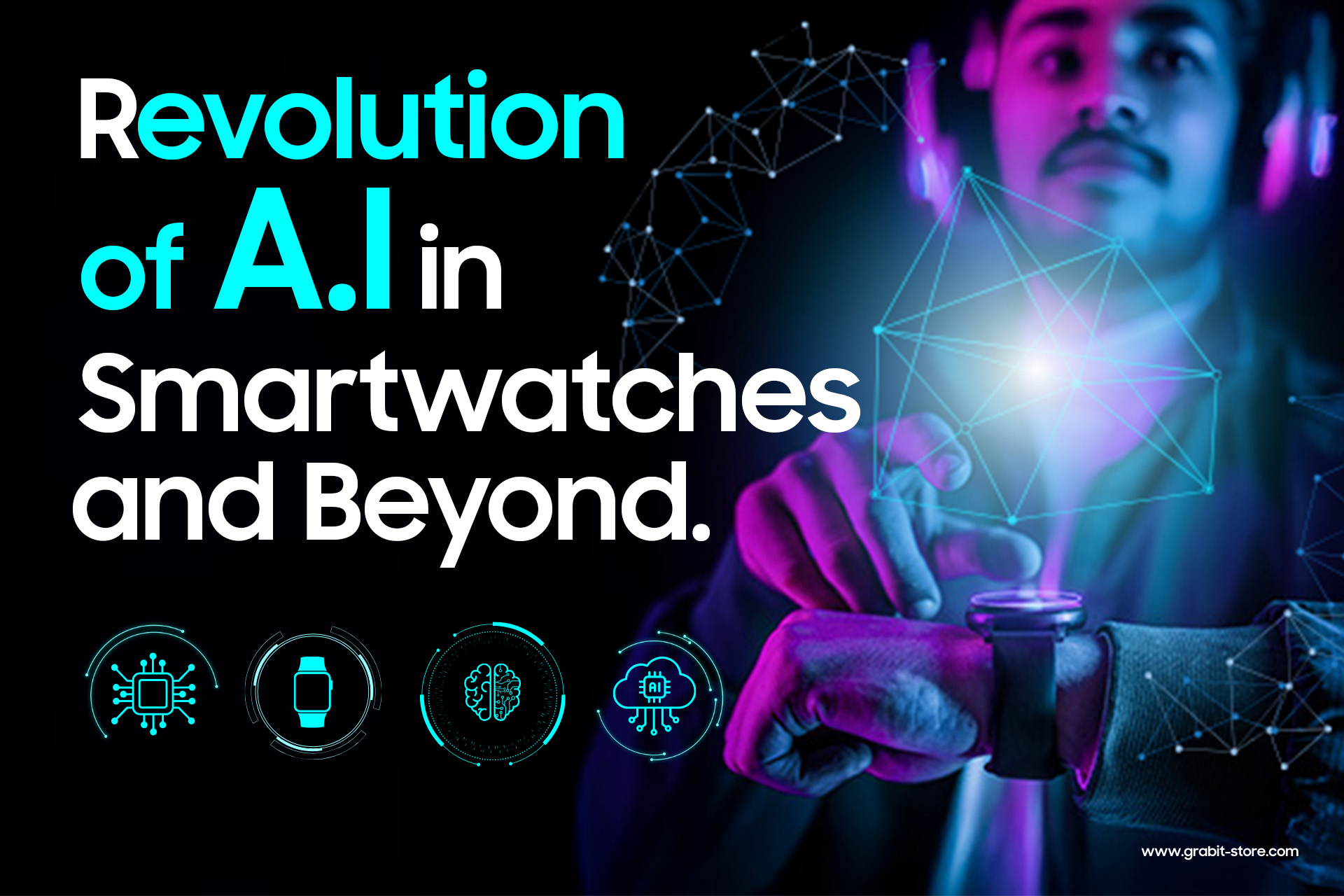
.png)
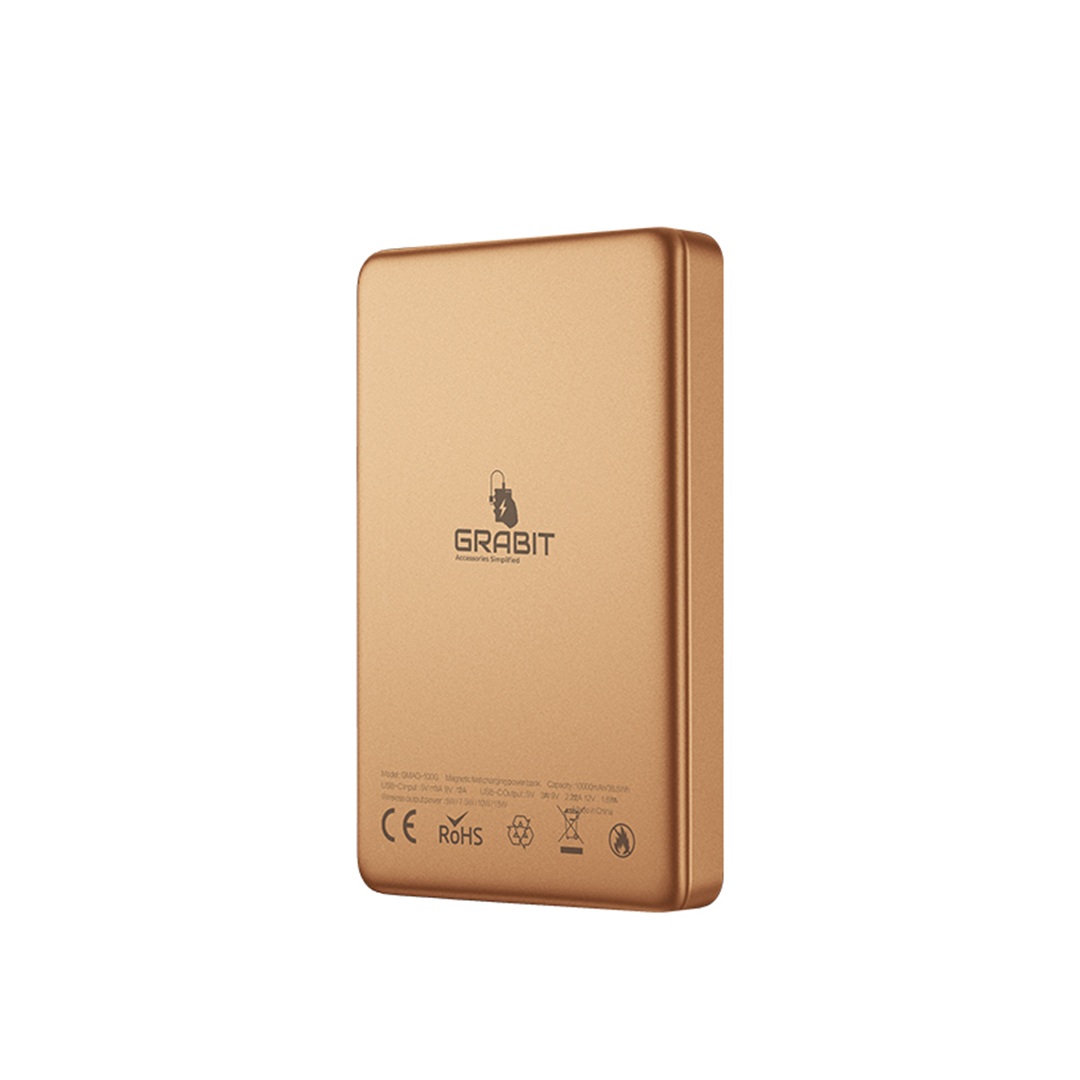
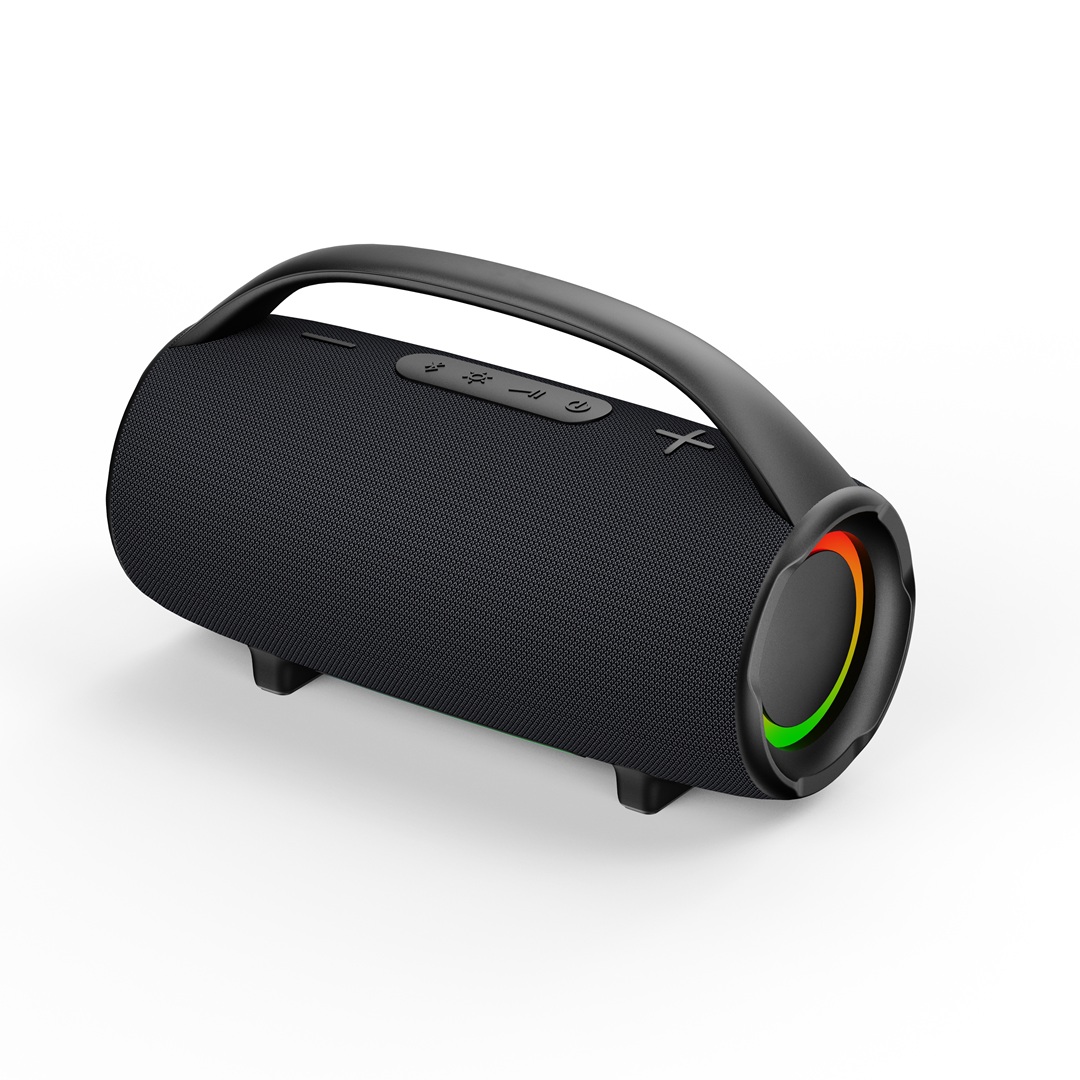
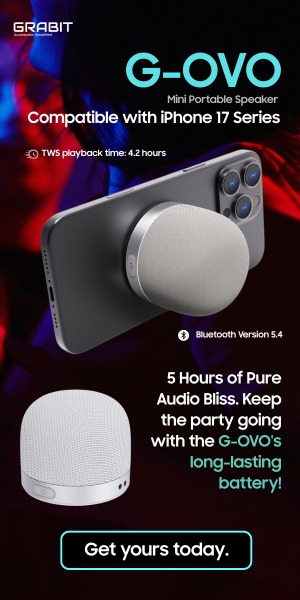
Leave a Reply
Your email address will not be published. Required fields are marked *